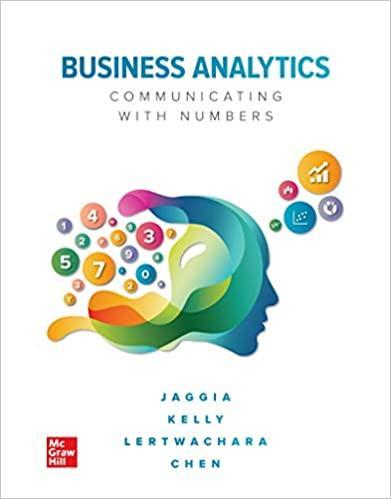Refer to the previous exercise for a description of the problem and data set. Build a default
Question:
Refer to the previous exercise for a description of the problem and data set. Build a default classification tree to predict whether the gamer will make in-app purchases. Display the classification tree.
a. What are the predictor variable and the split value for the first split of the default classification tree?
b. Build a full-grown tree. Which cp value is associated with the lowest cross-validation error?
c. Is there a simpler tree with a cross-validation error that is within one standard error of the minimum cross-validation error? If there is, then which cp value is associated with the best-pruned tree?
d. Prune the full tree to the best-pruned tree or the minimum error tree if the answer to part c is “No.” Create a confusion matrix and display the various performance measures. Assign Class 1 to be the positive class. What are the accuracy, sensitivity, and specificity of the minimum error tree on the validation data?
e. Display the cumulative lift chart, the decile-wise lift chart, and the ROC curve of the minimum error tree on the validation data. Comment on the performance of the classification tree.
f. Score the two gamers in the In_App_Pur_Score worksheet using the pruned tree. What is the probability of the first gamer making in-app purchases according to your classification model? What is the probability for the second gamer?
Data from Exercises 21
Monstermash, an online game app development company, wants to be able to predict which gamers are likely to make in-app purchases. Ranon Weatherby, the company’s data analyst, has compiled a data set about customers that contains the following variables: customer age (Age), sex (1 if male, 0 otherwise), household income (Income in $1,000s), the number of years playing online games (Years), the number of hours playing online games per week (Hours), whether the customer has a credit card (CreditCard), whether the customer has a Facebook profile (Facebook), and whether the customer has made in-app purchases before (Buy). A portion of the In_App_Pur_Data worksheet is shown in the accompanying table. Create a classification tree model for predicting whether the customer will make in-app purchases (Buy). Select the best-pruned tree for scoring and display the full-grown, best-pruned, and minimum error trees.

Step by Step Answer:

Business Analytics Communicating With Numbers
ISBN: 9781260785005
1st Edition
Authors: Sanjiv Jaggia, Alison Kelly, Kevin Lertwachara, Leida Chen





